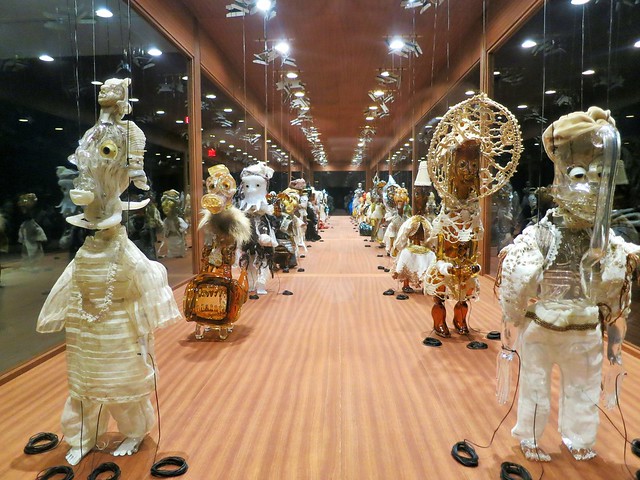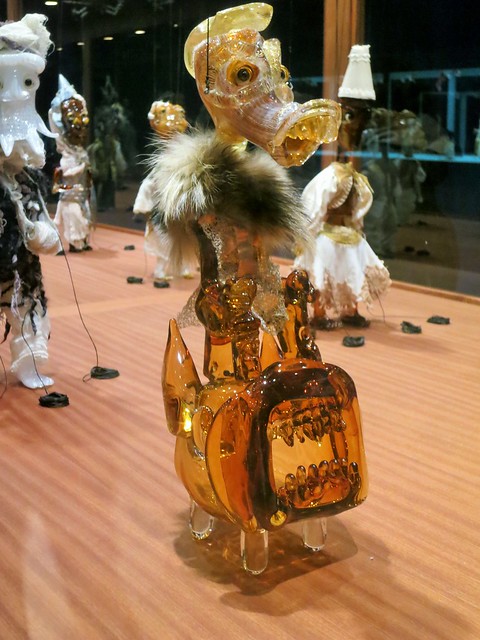by KARL STEEL
This series of posts is going to be about sky burial, ecomaterialism,
edibility, and birds vs worms as eaters of bodies, and it’s going to be
the rough draft for the first section of my “worms” chapter for my
second book. Hang tight if that’s what you want. If the first thing you
want, however, is a deep dive on the cultural afterlife of one of the
less famous Babylonian kings, then you, my friend, my perhaps avian
friend, are in for a treat.
This is the story of Evilmerodach, who cut up his father's corpse and fed him to 300 birds.
Sometime in the early fourteenth century, the
Speculum humanae salvationis
(The Mirror of Human Salvation) hit Latin Christendom like a ton of
allegorical bricks. Available in more than 380 manuscripts from 1324 on,
a typical page looks like this:
 |
| BnF Lat 512 34r - non-allegorical bricks? |
Above, we have two illustrated scenes from the Bible, and below, an interpretation in Latin verse (or, as the fourteenth century wore on, still other languages: English, French, Dutch, Czech, and especially German, but oddly not Italian). For the most part, the SHS illustrates expected scenes: Adam and Eve’s expulsion from the garden; Noah’s ark; Jonah’s slithering out from the whale; Abraham’s interrupted sacrifice of Isaac; the misery of Job. More surprising are the many historical scenes, largely drawn from the life of David and the Book of Judges: Ehud kills Eglon; Samson pulls apart a lion’s jaws; Benaiah (
whom you might remember as a son of Jehoiada) also kills a lion; and, in illustrations as horrific as Goya’s Disasters of War, David punishes his enemies.
 |
| BL Sloane 346 18v |
And,
in every illustrated version I’ve seen (17 so far), Evilmerodach
(elsewhere also spelled Evilmarodach, Awel-Marduk, and, less likely,
Amel-Marduk) is dismembering the exhumed corpse of his father,
Nebuchadnezzar the great, and feeding his limbs to the birds. He is
supervising, alone or with his retinue; or he’s standing over a slab or
table or down in the sarcophagus, doing the dirty business himself; he
has an ax, a knife, or a falchion, presumably coded as the weapon of an
“eastern” tyrant. We know he’s the king because he’s wearing a crown;
his father’s also crowned, although his head’s likely to be lying on the
ground,
staring up blankly at his son; or it might be the meal of one hungry bird. Or, it might be hoisted aloft, slung between two. Like a cocoanut (
BnF Latin 512, 27r or especially
BL Sloane 346 18v).
This would clearly seem to be
a bad thing.
This is how, for instance, Jacopo de Cessolis’ kingship
manual-cum-commentary on chess takes the story: though I don’t know why
Friar Jacopo made Evilmerodach his exemplary bad king (research is
ongoing, but my eye's on you Giles of Rome), this exhumation is chief
evidence that our Bablyonian king needs moral instruction: for
Evilmerodach was “a
jolye
[vigorous] man without justyce and so cruel that he did do hewe his
fader’s body in thre hondred pieces and gaf hit to ete and devoure to
thre hondred byrdes that men calle voultres” (
Caxton’s translation; for the medieval French,
see here).
I would be astonished if this late thirteenth-century work (surviving
in more than 100 manuscripts) were not the immediate source for
SHS’s Evilmerodach moralization. But I’m just as certain that neither treatment is quite fair to our king.
The earliest account dates to Jerome’s early fifth-century commentary on Isaiah (for
14:18). He ascribes the story to the Jews (narrant Hebraei huiusmodi fabulam;
PL 24: 162C-D), but Josephus’s history, for example,
confines itself only to the Biblical account of Evilmerodach’s involvement in Joachin’s triumphal return (
Jeremiah 52:31-34, essentially the same as
2 Kings 25:27-30); the Biblical history in
pseudo-Philo (middle of the 2
nd c?) doesn’t go any later than the Book of Judges; the twelfth-century traveler
Benjamin of Tundala sticks to the Biblical account; so the earliest extant written Jewish version of it belongs
to the fourteenth-century Rhineland. Or so
says Louis Ginzberg. It may be that the tradition passed, in fact, from the Christians to the Jews.
In
Jerome, Evilmerodach gets what Jacopo doesn’t grant him: a motive.
Evilmerodach had reigned during the seven years his father lived as a
beast, and, when Nebuchadnezzar returned to sanity, he, in his
gratitude, flung his son in prison, where he (along with the Jewish king
Joachin, aka Jeconiah, aka Coniah) languished until the old king
finally died. But Evilmerodach’s counselors needed convincing that
Nebuchadnezzar was
really gone (metuebant ne viveret qui
dicebatur exstinctus); so Evilmerodach had him dragged from the tomb
with hooks and ropes, and, with all the moral authority of a just king,
proclaimed: “Sepultis omnibus qui a te interfecti sunt, tu solus
insepultus iacebis” (all will be buried whom you killed, and you alone
will lie unburied). End of story. Quite the opposite of tyranny.
The story shows up next in one of Agobard of Lyon’s (d. 840) many treatises against the Jews, where this
Johnny One-Note
uses it to prove the truth of Christ’s resurrection. Of course. Still
hooks and a rope (unco et funibus); no dismemberment; no birds. These we
first get in
Haymo of Auxerre’s
(d. 855) roughly contemporary Isaiah commentary. Evilmerodach is
certain his father will come back: “my father dies when he wants, he
rises up again when he wants!” (Pater meus quando vult moritur, quando
vult resurgit). Joachin – now coming into his own as a clever courtier –
knows just the trick: get 300 birds from various parts of the world,
exhume the body, cut him into tiny pieces, and tie every part to a bird
(ligaret unicuique avi partem suam), saying: whenever these very birds
gather together,
then your father will resurrect (Cum hae simul
aves quandoque convenerint, tunc resuscitabitur pater tuus). Hugh of St
Victor’s (d. 1141)
commentary on Joel,
like Jerome, ascribes the story to the Jews (Hebraica docet), and
simply has Evilmerodoch, still scared, concoct the idea on his own. Here
he burns his father to cinders, which he splits into four bags: tying
the bags to the necks of four eagles, he releases them to travel to the
four corners of the world (Quo in quatuor marsupiis dispertito ad
quatuor aquilarum colla ligagavit, quibus per quatuor orbis climata
dispositis eas avolare permisit).
It would take Peter Comestor’s (i.e. Peter the Eater’s) enormously successful
Historia Scholastica (1173) for Evilmerodach story to get close to its final form: king, 300 parts, 300 birds, and, finally,
birdfood.
Peter’s version also benefits from an admirable directness:
When
he began to reign, he raised up Joachin, whom he had a companion in
prison, and fearing that his father would resurrect, who had returned
from being a beast into being a man, took Joachin into counsel; at whose
counsel, he exhumed the corpse of his father, divided it into 300
parts, and gave the 300 parts to 300 vultures. And Joachin said to him,
“Your father will not resurrect until these vultures return together”
[Cumque
regnare coepisset, elevavit Ioachim, quem socium habuerat in carcere,
timensque ne resurgeret pater suus, qui de bestia redierat in hominem,
consuluit Ioachim. Ad cuius consilium cadaver patris sui effossum,
divisit in trecentas partes, et dedit eas trecentis vulturibus. Et ait
ad eum Ioachim: “Non resurget pater tuus, nisi redeant vultures in
unum.”]
All that Peter misses is the accusation of tyranny. For my friends in English departments, one last, less recherché citation:
Ranulf Higden’s Polychronicon,
which is basically Peter Comestor’s version, with its English
translations having Nebuchadnezzar’s diced corpse going to “þre hondred
vultures” for “etynge” (in Higden’s Latin, “devorandas”), and in the
other, as well, to “iij c. gripes” [300 vultures;
def. C], presumably also for eating.
To
look at this with more charity than Jacopo de Cessolis did,
Evilmerodach is simply doing what any king must do. He must secure his
rule, both against other present claimants, and against his own lineage,
which must neatly, definitively swap him in for the previous king. The
previous king really needs to be gone: the king is dead (“are you
sure?”); long live the king (“but only this one, for now”)! Faced with
this, Evilmerodach, like any king, does what he must.
Antique psychoanalytic interpretations of the primal hoard, with everything that follows from that (
non/nom/nomnomnom du Père),
should also be suggested: the dismembered father, made really dead, is
all at once an overcoming of Nebuchadnezzar’s tyranny, a perpetuation of
it (by dishonoring the dead), an act of power (who else can get away
with desecrating a king’s corpse?), an act of fear (“is dad really
dead?”), and of course something that looks more than a little like
butchery. As if Evilmerodach were planning to eat his father’s corpse.
Like
a ferocious beast. Recall that the story is also one about humans and
animals: being with the beasts is like being dead; and being returned to
the beasts simply reverses what he had been in his madness. He ate
grass as an ox (
Daniel 4:30), and now he himself is fodder.
Evilmerodach makes his father a bird feeder.
But Jacopo de Cessolis made him a tyrant, and the
Speculum humanae salvationis piled on, so that, even in published scholarship, Evilmerodach’s sometimes charged with having
killed his father (this post is, among other things, a resource to ensure that no one else makes this mistake). The
Middle English verse explains:
King Evilmeredach of swilk / some tyme gaf for lyknesse
When he in his dede fadere / exercised his wodenesse
Whas body dolven out of the grave / in thre hondreth gobets he kitte
And to thre hondreth voltoures / forto devoure dalte itte
So in thaire fadere crist for thaym dede / haves fals cristen thaym wodely
What thay wilfully synnyng hym est sones crucifye
And thay synne more wreching / crist in his deitee
Then they yt crucified hym lyving / here in humanitee.
That
is, Evilmerodach’s treatment of his father is like those who through
their sin crucify him over and over again. And that would seem to be
that: Evilmerodach is now just plain Evil.
Except that
Evilmerodach normally shares his page with Absalom, David’s rebellious
son, captured and killed when his long, beautiful hair tangles itself in
a tree.
 |
| Biblioteca Apostolica Vaticana, Pal. lat. 1806 31v |
For the
SHS interpretation, Absalom is no bad son.
Instead, he’s a symbol of Christ:
Absalom is stabbed by three spears as he dangles from the tree, just as
Christ was stabbed by three lances, that is, three pains, namely, the
severity of the pain, the bitter grief of his mother, and carrying the
weight of the sins of the damned.
This delirious allegorization, like nothing so much as the modern habit of finding Christ in any given thing (
warning: dog),
reminds us that allegory does not completely overwrite the vehicle.
Instead, the sometimes shocking inadequacy of the vehicle to tenor
forces us to remember the vehicle’s continued material existence. Though
allegory is sometimes -- especially in the Middle Ages -- held to be
the “nut” underneath the shell of a literal reading, in this case, the
“nut” is the historical referent, available for, and grounding,
unceasing and mobile interpretation. In this case, though he is
temporarily read as Christ, Absalom remains behind the
SHS interpretation
what he must still be, a bad son; though he is temporarily read as a
figure for blasphemous, false oaths, or just sin in general,
Evilmerodach likewise remains a frightened king, doing what he must. And
whatever the interpretation, his father’s corpse remains a corpse,
dismembered, and the birds remain hungry birds.
We should not lose
track of the material business of Evilmerodach. If we remember that, we
can pay better attention to the Evilmerodach’s craft. Certainly,
sometimes the
SHS just throws the new king into the tomb with
his father, losing itself in the specificity of this weird solution to
royal succession (Berlin,
Staatsbibliothek, Preußischer Kulturbesitz, Ms. germ. fol. 245 48r; similar, but less odd,
BnF Latin 511, 26r).
At times, Evilmerodach wields a sword, a royal weapon, and just hacks
away at his father’s corpse as he would any other human body (
Ms Douce 204 25v or
Einsiedeln, Stiftsbibliothek, Codex 206(49) 25r). Sometimes, however, he uses an ax
(BnF Latin 9585, 30v), sometimes with the body on a wooden table, working like a butcher (
Sarnen, Benediktinerkollegium, Cod. membr. 8, f 26r).
 |
| Sarnen, Benediktinerkollegium, Cod. membr. 8, f 26r |
We
can compare it to this butcher, for example, from Caffaro di Rustico da
Caschifellone’s groundbreaking annals of Genoa, one of whose
manuscripts features this worker among its many other civic marginalia (
BnF Latin 10136, 6v).
 |
| BnF Latin 10136, 6v |
As I observed in
How to Make a Human (208-10)
, medieval people were fully cognizant of the similarity between animal and human flesh (after all, the Latin
carnis
doesn’t differentiate between the two), and the concomitant similarity
between butchers and, well, people butchers. Like soldiers. And not only
soldiers.
But the distribution of the royal body to the birds
also recalls a ritual that has captured the love of ecocritics, me
among them. This is the Tibetan ritual of “sky burial,” which,
regardless of its variations, always sees corpse fed to wild birds. I’ll
have much more to say about this in my next post: about the sometimes
ahistorical enthusiasm for this ritual in ecocritical art, in what would
have been known about it in Latin Christendom, what this has to do –
and doesn’t have to do – with late medieval Christian burial practices,
and what is at stake, from an ecocritical perspective, between being
esca vermibus (food for worms) and
esca avibus (food for birds). And I’ll also have something to say about Heidegger (a sneak preview: I’ll argue that der Mensch ist das
Futter des Seins, Man is the fodder of beings).
For
now, though, I’ll leave you with this: the connection of Evilmerodach
with sky burial seems to be a stretch, and, indeed, for most of the
manuscripts I’ve been able to examine, it is. Evilmerodach is a bad, bad
king, and he’s doing a bad, bad thing, although he is
also, in
some manuscripts, being a perfectly good butcher, albeit with an
unusual carcass. It may be too much to see this as intimating any kind
of sky burial.
Except that at least one German illustrated
adaptation of the Bible, Morgan M.0268, fol. 021v, features –
surprisingly – Alexander the Great arriving (naked?) through the woods,
and, in the middle, a dinner party with Roxana of Bactria, and then, in
the right, what I think might be mistakenly labeled as Evilmerodach,
dismembering his father and feeding him to the birds. Whoever he is,
he's not wearing a crown; but the Morgan believes him to be
Evilmerodach; notably, he is in the east, where this late
fourteenth-century artist would have expected to find sky burial. And in
at least one German Alexander,
Evilmerodach’s shrine [“
sarc”], green as grass, makes an appearance (3563-67) .
 |
| Morgan M.0268, fol. 021v |
I may just be on to something. Part two will arrive in several days.











